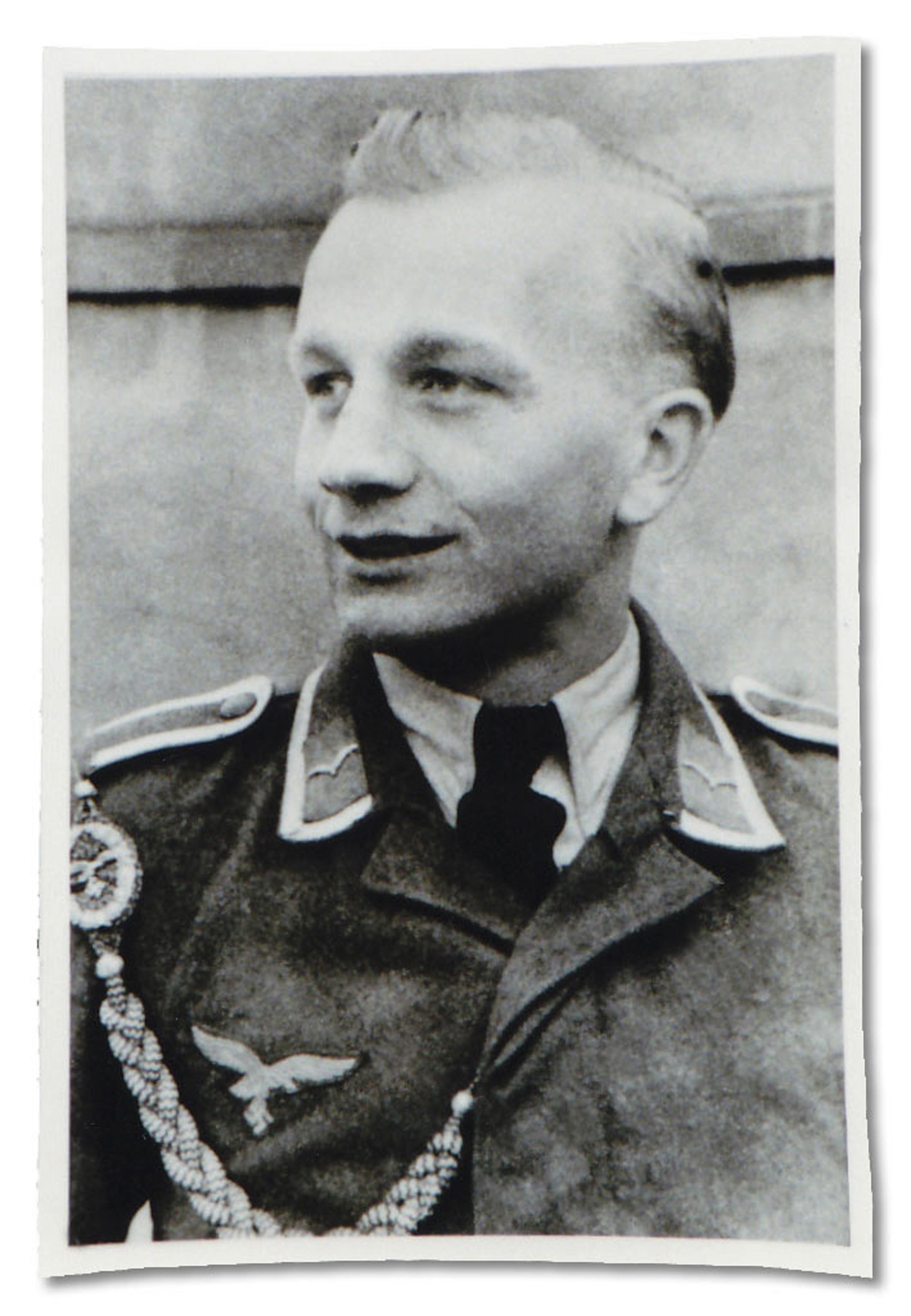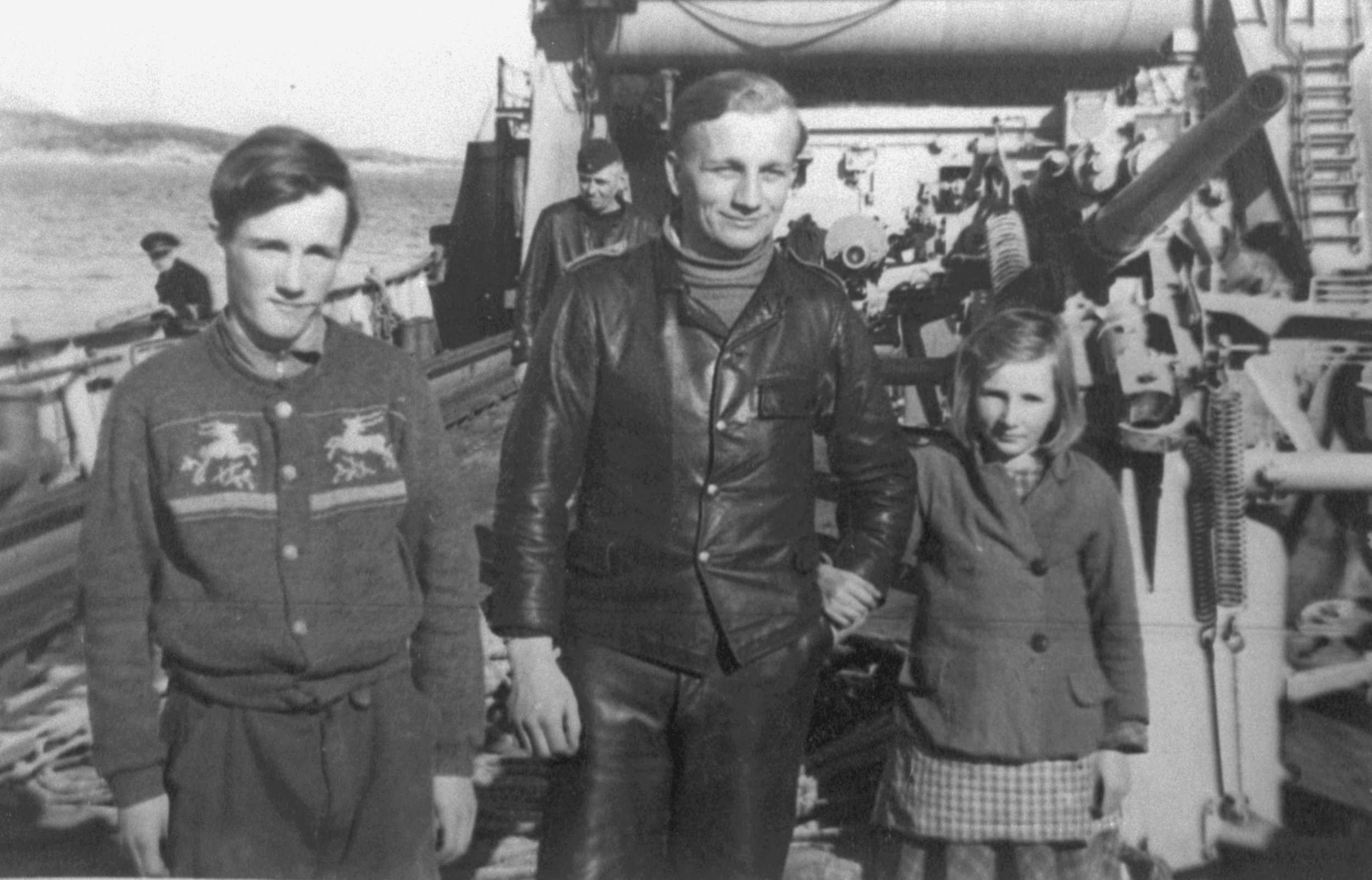The friendship
Twenty-year-old Günter Seraphim was the pilot of Yellow 3. He was saved from drowning outside Trøndelag by a local woman and her young son. Seraphim lost his life later in the war, but the rescue operation has not been forgotten.
Twenty-year-old Günter Seraphim was the pilot of Yellow 3. He was saved from drowning outside Trøndelag by a local woman and her young son. Seraphim lost his life later in the war, but the rescue operation has not been forgotten.

©www.luftwaffe.be
Peder Blikø witnessed the dramatic emergency landing in 1943. In an interview with the diver Lasse Iversen in 2009, he explains more about what happened [4]:
“Olette Blikø, my mother, and Birger, my younger brother, also saw what happened, but they were on Blikøya Island, and they were much closer than I was. ”
They rowed out towards the crash site and discovered the pilot in the water wearing a life jacket. At the time, they didn’t know whether the plane was Allied or German. Should they help the enemy? Olette was never in doubt: “He has a mother too”, she told my brother, says Peder.
The pilot had been overcome by panic. He grabbed on to the gunnels and almost capsized the boat. Olette used a bailer to rap his fingers until he let go. But she and Birger managed to get the stranger on board. They rowed to Risværet where there was a telephone. The pilot was given food and warm clothing. He called the German headquarters in Rørvik and was soon picked up by boat.
Günter Seraphim later explained that the heavy engine had pulled the plane down quickly. He had struggled to open the glass of the cockpit and had been underwater in the plane for some time.
[4] Iversen, Lasse: Nytt flyvrak funnet. Messerschmitt Bf-109. Dykking, 6/2009 s. 4. The taext about the emercency is mainly based on Iversen’s article.

Photo: Lasse Iversen
The cockpit of Yellow 3 at a depth of 60 metres.
According to the German archives, the accident happened at 2.10 pm. Already at 3.25 pm, a German aircraft from Bodø was sent out on a search. In the war logs of the German air rescue service in Norway, it says that Seraphim was rescued by ‘Norwegian fishermen’. The H.A. Wedel, an air control ship, set off from Trondheim on the night of the accident to find the aircraft.
Seraphim was on the ship. He rowed in to Blikøya Island to thank Olette and Birger. They were given schnapps, tobacco and a picture of Seraphim. On a piece of paper, Seraphim wrote ‘IV / JG5 and 14649’. It was the number of his section, and the serial number of Yellow 3. Olette thought the number was his service number. It would be fifty years before the Blikø family identified the pilot they had rescued. The Germans never managed to locate Yellow 3.
Günter Seraphim was born in Brandenburg on 18 May 1922. He completed training as a toolmaker in 1939/40. At the age of 19 in 1941, he was drafted into the Wehrmacht. The following year he went to a pilot flight academy in Roth near Nuremberg.
Seraphim must have arrived in Norway in late 1942 or early 1943. Here he was ordered to serve in Staff IV, Jagdgeschwader 5. Staff IV was mostly located at Lade Airport Trondheim throughout the war. They also used Ørlandet Trondheim and other airports in the region.
Seraphim is recorded in German archives as being involved in two other accidents in 1943. On 17 July, he had fainted while landing at Gossen Airport near Molde. The accident was due to fuel vapour in the cockpit. On 7 November, he was injured when his plane tipped over during landing at Ørlandet Airport in Trondheim. Seraphim was injured at Christmas in 1943. He was on the Meteor II hospital ship and was on his way to convalesce on the island of Westerland Sylt in Denmark.

© www.luftwaffe.be
Seraphim’s plane after the emergency landing at Gossen. Narrow landing gear meant that Bf 109s were prone to tipping over during take-off and landing.
In April 1945, we find Seraphim in Germany. He was recalled to Germany to defend the Reich, and joined the Defence of the Reich, Reichsverteidigung, as many did towards the end of the war. Seraphim still belonged to Jagdgeschwader 5. His last known base was at Lübeck.
The final battles took place in Germany. German fighter pilots fought an impossible battle against swarms of Allied aircraft and artillery fire from the ground.
German burial authorities state that “Sergeant Günter Seraphim, born 18 May 1922, died when his plane was shot down and crashed near Schweringen south of Bremen on 10 April 1945.” He was then almost 23 years old.
Seraphim’s Bf 109 was fatally hit by British fighter planes. Seraphim had obviously managed to eject before the burning plane crashed to the ground, but he did not manage to deploy his parachute. A notebook, a bag of foreign coins and an engagement ring were found on the deceased.
On Friday 16 May 1945, Seraphim was buried at the local church in Schweringen. In 1955, his remains were transferred to the war cemetery in Marienkirche near Bremen and buried there.

Photo: Unknown

Photo: Unknown
Gravestone at the war cemetery in Marienkirche near Bremen.
The Blikø family never forgot the young pilot. They did not know his name, but often wondered how he was doing. In the 1990s, Roald Blikø succeeded in establishing contact with Seraphim’s brother and his family in Germany.
Later, the families met several times, and they keep in contact with each other. During the restoration of Yellow 3, Seraphim’s brother and his two sons visited the Aviation Museum in Bodø.
It all started with the rescue operation in 1943. Olette Blikø chose to see the pilot as a human being, not as an alien or enemy.
“He also has a mother.”

Photo: ©www.luftwaffe.be
Günter Seraphim with Birger Blikø and his sister on board the ship that arrived to raise the aircraft.